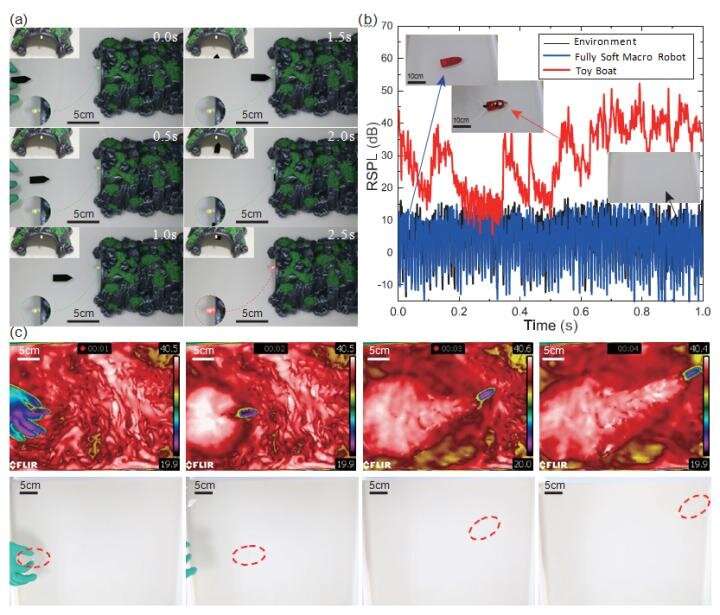Agile untethered fully soft robots in liquid

Soft robots have gained much attention in the past several years for their unique characteristics compared to traditional rigid robots. However, unlike the Baymax in the film "Big Hero 6," state-of-the-art soft robot is just a prototype in labs, usually tethered, which means it requires an electrical wire or pneumatic tubing for powering. To exploit the full potential of soft robots, untethered design is preferred. Existing approaches to equip the soft robots with untethered design usually involve high energy-density powering sources, which leads to integration problems, otherwise the robot will be bulk and clumsy for carry low energy-density power sources.
In nature are enormous creatures who have evolved for billions of years for surviving. Rove beetles in genus Stenus, a type of terrestrial insects lives around pools or streams, would gain a burst of kinetic energy to escape when they accidentally fell onto the water, by secreting chemicals to generate a surface energy gradient. Such a propulsive process, commonly known as Marangoni Propulsion, was adopted by live creatures, so it was mild and gentle, completely compatible with soft materials.
In a new research article published in the Beijing-based National Science Review, scientists at Huazhong University of Science & Technology report an untethered fully soft robot in liquid whose actuation employs environmental energy gradients. By releasing environmental active materials (EAMs) to the liquid environment, the robot could gain an agile speed of 5.5 body lengths per second, which is 7 times higher than the best reported value in the untethered soft robotic fish.
"A few advantages occur by adopting such aß mechanism, such as quietness, no thermal fatigue and so on." Prof. Zhigang Wu said, "More importantly, the actuation and the robot functional realization can be complemented separately. The designer, for the first time, gains the opportunity to focus on the function realization. This might enable the soft robot in some untouched scenarios in the future."
More information: Liang Xiong Lyu et al, Bio-Inspired Untethered fully soft Robots in Liquid Actuated by Induced Energy Gradients, National Science Review (2019). DOI: 10.1093/nsr/nwz083




















